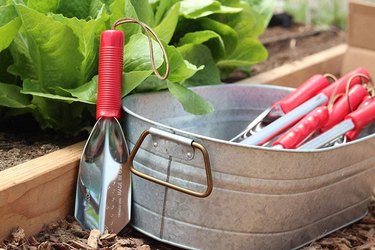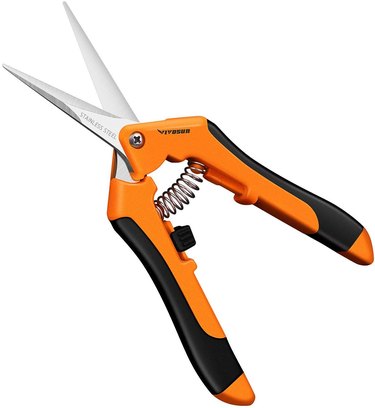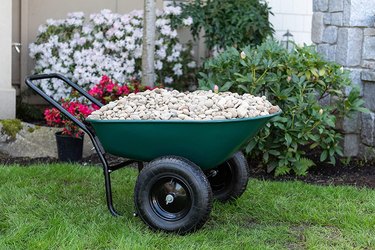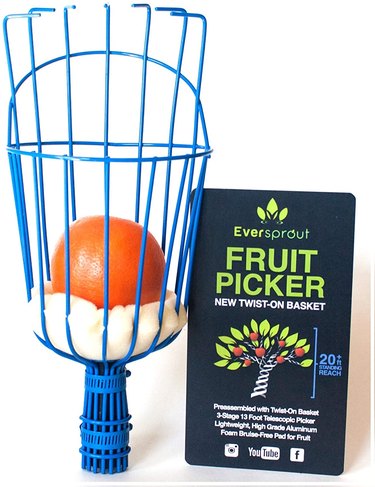
Using the right tool for a particular gardening chore makes it less labor-intensive and more enjoyable. This applies to harvesting as well, where the right tool is dictated by the type of crop you're gathering. Many gardening tools come in short-handled styles for small or raised gardens and standard long-handled ones for the big jobs. Caring for your tools and storing them properly at the end of the season ensures their usefulness for years to come.
1. Diggers and Delvers
Video of the Day
Harvesting root vegetables can be tricky in tough, unyielding soil or soil that has become compacted. Pulling such crops up by the leaves often rewards you with plenty of tops but no roots. Digging around and below the vegetables with a trowel eases them up more gently without damaging their outer skins, and also allows you to replace the soil you disturbed in the process.
Video of the Day
A handheld trowel with a narrow blade loosens the soil around carrots, particularly long varieties, such as "Apache," "Imperator," and "Healthmaster" that grow 9 to 10 inches long. A flat-tined garden fork is useful to dig up potatoes. Dirt falls between the tines, allowing you to lift the potatoes without damaging them.
2. Slicers and Snippers
A well-sharpened garden knife can be invaluable in cutting cabbage from thick stems. A short-handled machete also works well here, as it does when harvesting other heavy vegetables such as winter squash. Well-sharpened garden shears do a great job of harvesting herbs and leafy vegetables such as leaf lettuces and spinach.
3. Strainers and Drainers
An old-fashioned garden hod does double duty as a harvesting basket and as a strainer for rinsing vegetables as you bring them in from the garden. Constructed of a wide-mesh screen attached to a wooden frame, the hod makes quick work of cleaning roots vegetables such as potatoes, beets, and carrots. You can spray the produce right in the hod and allow them to drip-dry in a warm, airy place, or you can dunk the whole thing in water to soak the vegetables clean. Mesh produce bags double as storage bags that allow air to circulate, and can also be used to dip and rinse vegetables.
4. Luggers and Movers
Transport your garden produce in style with a trug, or a gathering basket. Traditional versions are shallow baskets made of wicker or willow, and also serve as temporary storage units or to display colorful fruits, vegetables, and herbs on your table. Old-fashioned harvest baskets constructed of wooden lath and wire are sold in a variety of sizes that hold from 3 half-pecks to 3 bushels. Updated trugs are made of polyethylene and hold up to 11 gallons of produce. A wheelbarrow or garden cart is invaluable for moving larger amounts of produce easily to a work area for cleaning, sorting, and storing.
5. Rakers and Pickers
Facilitate the harvesting of blueberries, hardy in U.S. Department of Agriculture plant hardiness zones 3 to 11, depending on variety, with a hand-held blueberry rake. Constructed of aluminum, the lightweight tool features tines that penetrate the bushes between the clusters of fruit and releases them down into a scoop.
A fruit picker consisting of clamps that hold the fruit and twists it off into a basket makes shorter work of harvesting apples, which grow in USDA zones 3 to 9, depending on the variety, as well as the produce of other fruit trees. Mounting the picker on a pole eliminates the need to climb into the tree.




